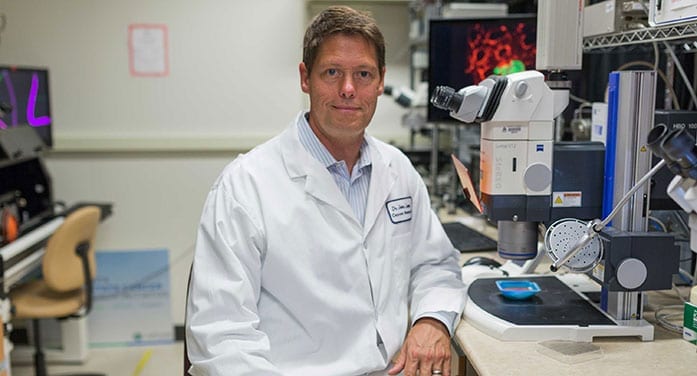Nanostics’ test assesses an individual’s viral load, which is the number of viruses they have replicating within their systems, and determines the immune response to COVID-19. When the immune system overreacts, it leads to many of the severe patient outcomes associated with the disease.
The test would help health-care professionals determine more quickly who is more likely to develop severe symptoms that would require hospitalization or ventilation.
Nanostics is using its ClarityDX Platform technology, for which it has a patent pending, to develop the test that gathers the same type of information remotely as a doctor would obtain from a tissue biopsy, said CEO John Lewis, who is an oncology researcher at the U of A.
“We’re looking at the information in the blood using a technology that can examine tiny fragments of cells that have broken off or been released from all over your body and can be detected in the blood,” said Lewis, who is also a member of the U of A’s Cancer Research Institute of Northern Alberta.
“These fragments of cells are called extracellular vesicles, and we combine that detection technology with a sophisticated mathematics approach – machine learning – that allows us to be able to diagnose disease with unprecedented accuracy.”
Nanostics is collaborating with the Canadian BioSample Repository at the U of A and the Century Clinical Research Institute in Florida to recruit patients to validate the test.
Lewis predicts that a few hundred patients will be recruited for the purposes of validation, and the test should be ready for clinical validation in about six to eight weeks.
“We’re enthusiastic about the health-care system’s ability to respond to this disease threat, and Alberta is the ideal place to be able to both research and rapidly develop something that can improve this challenging situation,” said Lewis.
| By Adrianna MacPherson
This article originally appeared in the University of Alberta’s online publication Folio.
The views, opinions and positions expressed by columnists and contributors are the author’s alone. They do not inherently or expressly reflect the views, opinions and/or positions of our publication.



